Credit card reconciliation & accounting automation: the five-minute guide
Credit card reconciliation is an accounting process of double-checking and verification of credit accounts. The purpose of financial reconciliations in general is to demonstrate the accuracy and completeness of GL accounts through comparison to external transaction data sources. In this case, incoming or outgoing credit card payments recorded in the company accounts must be consistent with the payment provider statements of completed transactions.
Accountants must reveal and investigate any discrepancies between the internal and external transaction data source. The GL is the primary source for preparation of financial statements. Therefore, the quality of the financial reporting hinges on the integrity of the ledger. Prudent bookkeeping requires reconciliations as the necessary precaution against costly errors and mismanagement.
Credit card reconciliation process types
As previously mentioned, credit card reconciliation addresses both incoming and outgoing payments – the income as well as the expense side. When a company collects its revenue through cashless customer payments, the most prevalent payment method seems to be through credit cards. However, expense accounting also deals with credit card reconciliation in use cases like business travel reimbursements, employee benefits, vendor payments, incentives and loyalty programs.
Credit card reconciliation process steps
In the course of reconciling merchant accounts, accountants must:
1) collate the merchant account statements for a definite period,
2) extract transaction details in the appropriate format,
3) put them side by side with the excerpt from the sales management system,
4) bring forth the bank statement to prove that the cash has hit the bank as well,
5) then tick the corresponding records that match across the three spreadsheets,
6) and look into the causes of mismatch for the outstanding items.
Similarly, when booking credit card expenses, accountants cross-examine the credit card statement, the receipts as evidence for the purchase, and the appropriate form of authorization for this expense to be recognized.
Easier to say than do. Reconcilers habitually struggle on every step of gathering comparable data, converting disparate data files, putting together Excel tables with clean standardized data, matching hundreds of line items, sorting and documenting discrepancies, and catching up with the status reports.
Credit card reconciliation challenges – what are they and how to resolve them
Credit card reconciliation has always been a laborious task. Nowadays, it has been growing in volume and importance as cashless and contactless payments gain more ground. However, accounting departments still toil over semi-automated spreadsheets tools with rudimentary capabilities to handle the complexity of the reconciliations. Their unreliable performance, particularly for complex, high-volume transaction matching which is of essence in credit card recs, threatens the company operational adequacy and clear audit record.
Here are some of the most common challenges in reconciling credit card payment:
Volume of transactions and complexity of the matching relationships
Reconciliations of card payments become increasingly unsustainable with semi manual matching tools. The obvious reason is the ever-larger volumes of transactions. Typically, a business with healthy growth will see more transactions coming in (or out for that matter). A couple of hours of ticking along two spreadsheets and receipts can quickly escalate to days and compromise the period-end close deadlines.
Reconciliation of payments facilitated by a third party payment provider must cross-examine the records of three (if not more) independent parties that participated in the exchange. Complexity stems from the types of mismatches that occur – from various instances of technical errors (time delays, void, insufficient balances), to human made mistakes, and disruptive events (chargebacks and disputes, refunds, discounts, service fees, surcharges and taxes, interest payment).
Three-way reconciliation is difficult. So are 1-to-many and many-to-many matching relationships. Volumes force accounting to increase the frequency of reconciliations. For some accounts, new data come in every day. Also, the unique transaction ID, if present, connects two items together. But if not, additional transaction attributes in a combination should compensate for the absence a unique identifier.
Labor intensive inefficient manual processes
Stacking together statements, file conversions, cleaning and enrichment, casual data entry and line-by-line comparison, ticking corresponding lines that match – all these create a series of bottlenecks to closing the customer or supplier account. As a result, cost accounting or cash allocation is stalled. Journal entries must be created and approved, too.
Fortunately, multiple, repetitive, logically consistent jobs can and should be automated with the appropriate reconciliations management software.
Documentation for reconciliation tends to stream in from multiple internal and external sources. The downside of paper based and semi-automated reconciliations is about converging your data in a unified format, extracting detail relevant for the reconciliation, capturing an audit trail and centralization of workflow, data, and documentation in one repository.
Numerous payments methods supported
A growing network of payment processing intermediaries, which leverage different technologies and partnerships to deliver seamless experience, supports consumer and business payment. Inevitably, businesses must meet demand for diverse payment methods. However, while competition is strong, payment technology standardization is low and achieving compatibility is still out of reach.
Heterogeneous file formats put transformation and enrichment capabilities of the reconciliation systems higher on the requirements list. Undoubtedly, automated data transfer and conversion is critical of enterprise class reconciliation, so your reconciliation solution must support integration with hundreds of data feeds. Besides matching capabilities, it is crucial how efficiently your reconciliation solution communicates with third party systems.
Unresolved ageing items that carry financial and operational risk
Exceptions management is the part of the credit card reconciliation process that requires the greatest focus and diligence. However, simple admin task around preparation for matching and the ticking & tying itself invade the time allocated for really value added work. Exceptions investigation and correction of discrepancies put the accounting principles for accuracy and consistency into practice.
Spreadsheets do not have the features to drive investigation and reporting workflows, track impactful ageing items, take discretion in the categorization of multiple exceptions or grouping them together for escalation in the appropriate chain of responsibility. Conversely, reconciliation automation takes care of:
• automatic categorization based on user-defined rules,
• tracking the transaction ageing and notification configuration in line with a defined risk matrix,
• escalation of groups of exceptions to the assigned department,
• continuous tracking of the resolution progress and reporting,
• journal entry creation and approval.
Key customer benefits of automated accounting and credit card reconciliation
Ecommerce and retail businesses, consumer services platforms in travel, leisure and entertainment all have a solid business case in the automation of credit card reconciliation. So do departments and organizations overseeing procurement, employee benefits, business travel expense accounting, etc. They are exposed to unmitigated risks of fraud, errors or untraceable losses if they choose to neglect their credit card reconciliations.
The positive impact of streamlined credit card reconciliation on spend controls and revenue collection is quite evident. In several ReconArt implementation clients have struggled with suboptimal revenue collection rates, painful compromises with account reconciliation accuracy for the deadlines’ sake. Before ReconArt, many used to match on account balance level only and write-off the difference for the most part. After taking ReconArt on board, automated, rule-based matching at transaction level pinpoints discrepancies at line item level to reduce the invisible uncollectible proceeds dramatically.
Key features of ReconArt for automated credit card reconciliations
End-to-end automation
ReconArt automates some or all steps of the credit card reconciliation process. The automation is based on configurable rules for matching, import, transformation, export, exception classifications, and reporting. The enterprise scheduler, in addition, takes care of the timely initiation in the process steps with the selected sequence and frequency.
Matching & overview of account balances and transaction details
With ReconArt, customers leverage superb matching functionality. Intuitive tools put business logic into machine executable matching rules. Unlike spreadsheets, reconciliation software enables data comparison by multiple criteria for improved match rates.
ReconArt supports multi-way matching performed in several steps. Also, the system can be configured to distinguish 1-to-1, 1-to-many, and many-to-many matching relationships. Credit card reconciliation often requires untangling batched sums. ReconArt drills down into lump sums and highlights exceptions.
Streamlined exceptions management and reporting
Importantly, ReconArt automates the identification and categorization of outstanding items: taxes, fees, FX differences, discounts, chargebacks, timing delays, posting errors. A backlog of ageing items is a sore sight for controllers and auditors, but ReconArt pays special attentions to transaction ageing tracking and offers functionalities for escalation and collaborative investigation of unresolved items.
ReconArt centralizes and controls the access to reconciliation data, workflows, and the supporting documentation. Control on access rights, efficient task management, and responsibility-based collaboration is now feasible. Additionally, the system captures a granular audit trail to ensure full accountability. Customizable dashboard for in-depth account status overview and reporting grants its users 360° visibility and enhanced transparency.
Integration with third-party systems
ReconArt connects to unlimited number of internal and internal data sources. The platform support all machine-readable file formats. The industry standards (SWIFT MT, ACH, CSV, XLS, CAMT.053, FixedWidth, BAI, XML, etc.) are supported out-of-the-box and regularly updated to keep up with the technology innovations.
ReconArt understands the importance of system-to-system connectivity and data feed management in reconciliation technology. There are multiple integration options available:
• File-based integration with any platform and tool by default
• API connector for a higher level of system-to-system integration
• ReconArt Data Factory (RDF) – an integration layer and API enabled user interface for file upload and instant validation

 follow our blog
follow our blog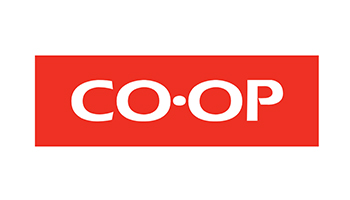
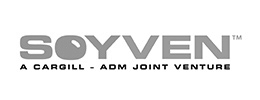

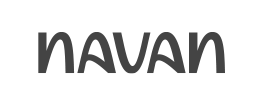






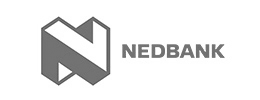


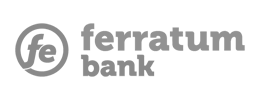


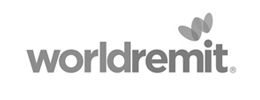






 Quick response
Quick response

